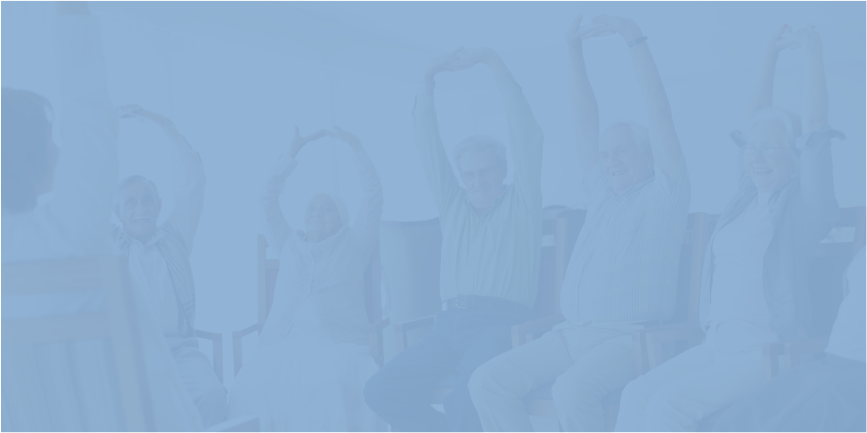Fall Prevention In Baltimore, Maryland
Under the leadership of Dr. L. Atanelov, Steady Strides is leading the way in providing comprehensive medical and rehabilitation services for older adults at risk of falls.
We take pride in being the nation's premier comprehensive fall prevention medical institute. Discover more about our specialized fall prevention care below.
Stroke Rehabilitation in Baltimore, Maryland
Steady Strides specializes in providing comprehensive stroke rehabilitation services that address the full spectrum of disabilities following a stroke event.
Our dedicated team is committed to helping you or your loved one achieve independence and an improved quality of life. We collaborate closely with our skilled on-site physical and occupational therapists, who work together as a cohesive unit to optimize your chances of a successful recovery in Baltimore, Maryland.
Pain And Other Conditions We Treat
SHOULDER:
Rotator Cuff Injuries:
Rotator cuff tears
Rotator cuff tendonitis
Frozen Shoulder (Adhesive Capsulitis):
Inflammation and thickening of the shoulder capsule
Shoulder Impingement Syndrome:
Compression of the rotator cuff tendons and bursa in the shoulder
ELBOW:
Tennis Elbow (Lateral Epicondylitis):
Inflammation of the outer part of the elbow.
Golfer’s Elbow (Medial Epicondylitis):
Inflammation of the inner part of the elbow.
Olecranon Bursitis:
Inflammation of the bursa at the tip of the elbow.
Nerve Impingement:
Cubital Tunnel Syndrome:
Compression of the ulnar nerve at the elbow.
WRIST & HAND:
Carpal Tunnel Syndrome:
Compression of the median nerve in the wrist.
De Quervain’s Tenosynovitis:
Inflammation of the tendons on the thumb side of the wrist.
HIP:
Hip Osteoarthritis:
Degeneration of the hip joint cartilage.
Trochanteric Bursitis:
Inflammation of the bursa at the outer hip.
Hip Labral Tears:
Tears in the cartilage lining the hip socket.
Piriformis Syndrome:
Spasm of the piriformis muscle causing nerve pain radiating down the leg.
KNEE:
Osteoarthritis of the Knee:
Degeneration of knee joint cartilage due to wear and tear.
Meniscus Tears:
Tears in the knee's shock-absorbing cartilage.
Patellofemoral Pain Syndrome:
Pain experienced around the kneecap.
ANKLE & FOOT:
Achilles Tendonitis:
Inflammation of the Achilles tendon at the back of the ankle.
Plantar Fasciitis:
Inflammation of the tissue along the bottom of the foot.
Ankle Sprains:
Ligament injuries in the ankle.
UPPER BACK (Thoracic and Cervical Spine):
Radiculopathy:
Irritation of nerve root causing pain radiating down the arm.
Thoracic Outlet Syndrome:
Compression of nerves or blood vessels in the thoracic outlet, resulting in upper back and arm pain.
Muscle Strain or Sprain:
Overexertion or injury to the muscles or ligaments in the upper back.
Kyphosis:
Excessive curvature of the thoracic spine, leading to a rounded upper back.
BACK & NECK
Herniated Disc (Lumbar Disc Herniation):
Protrusion of the outer portion of the intervertebral disc, potentially compressing spinal nerves.
Degenerative Disc Disease:
Wear and tear of intervertebral discs, resulting in pain and reduced mobility.
Sciatica:
Compression or irritation of the sciatic nerve, causing pain radiating down the leg.
Lumbar Spinal Stenosis:
Narrowing of the spinal canal in the lower back, exerting pressure on the spinal cord or nerves.
Spondylolisthesis:
Forward displacement of one vertebra over another, often causing lower back pain.
Facet Joint Syndrome:
Inflammation or degeneration of the facet joints in the spine, leading to pain.
Muscle Spasms:
Involuntary contractions of muscles in the lower back, resulting in pain and stiffness.
Compression Fractures:
Fractures in the vertebrae, often due to osteoporosis or trauma.
GENERAL BACK PAIN
Mechanical Back Pain:
Pain linked to spinal movement or posture, often due to strain.
Referred Pain:
Pain felt in the back stemming from organs or structures elsewhere in the body.
Ankylosing Spondylitis:
Inflammatory arthritis affecting the spine, causing stiffness and pain.
Musculoskeletal Imbalances:
Problems with muscle strength, flexibility, or alignment that contribute to back pain.
Scoliosis:
Abnormal curvature of the spine that may lead to various pain conditions.

Book An Appointment















